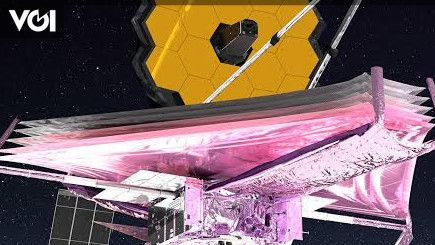JAKARTA – It will soon be known that the James Webb Space Telescope will begin its scientific operations, and researchers are now preparing their scientific goals or targets. The researchers will choose the objects that the Webb Telescope will study, as well as these distant galaxies and distant stars in the Solar System
“I led an equally excited team of astronomers to start downloading data. The Webb telescope can detect faint light from the earliest galaxies, but my team will be looking closer to home (the Solar System). They will use Webb to unravel some of the mysteries that abound in our Solar System,” said Webb interdisciplinary scientist for Solar System observations, Heidi Hammel.
It might come as a bit of a surprise that the researchers only saw nearby objects, in the Solar System’s cosmic backyard, given how powerful the Webb Telescope could actually be to observe objects farther away.
However, by observing targets in the Solar System, researchers can test the limits of the Webb Telescope’s capabilities, such as its ability to detect faint light sources (Jupiter rings) that are close to bright light sources (such as Jupiter).
Launching Digital Trends, Tuesday, May 24, to see objects further away, researchers can use the Hubble Space Telescope, which has imaged Jupiter in stunning detail and is used to observe the outer planets.
“Our program will observe objects throughout the Solar System. We will image the giant planet and Saturn’s rings, explore many Kuiper Belt objects, analyze the atmosphere of Mars, conduct detailed studies of Titan and much more!,” Hammel said.
–
–
“There are also other teams planning observations in the first year, 7 percent of the time the Webb Telescope will be focused on objects within our Solar System,” he added.
Hammel explained, that includes planned observations such as the study of Jupiter’s moon Europa, which has some interesting water activity in its environment.
Europa is a promising location for searching for habitable worlds beyond Earth because it has molten oceans beneath the icy crust, and researchers have observed plumes of water vapor hurled from beneath the surface there.
In the future, the Webb Telescope will take high-resolution images of Europa to view its surface and hunt for these blobs. The Webb Telescope spectroscopic instrument can see its chemical composition by looking at the wavelength of light absorbed.
–


